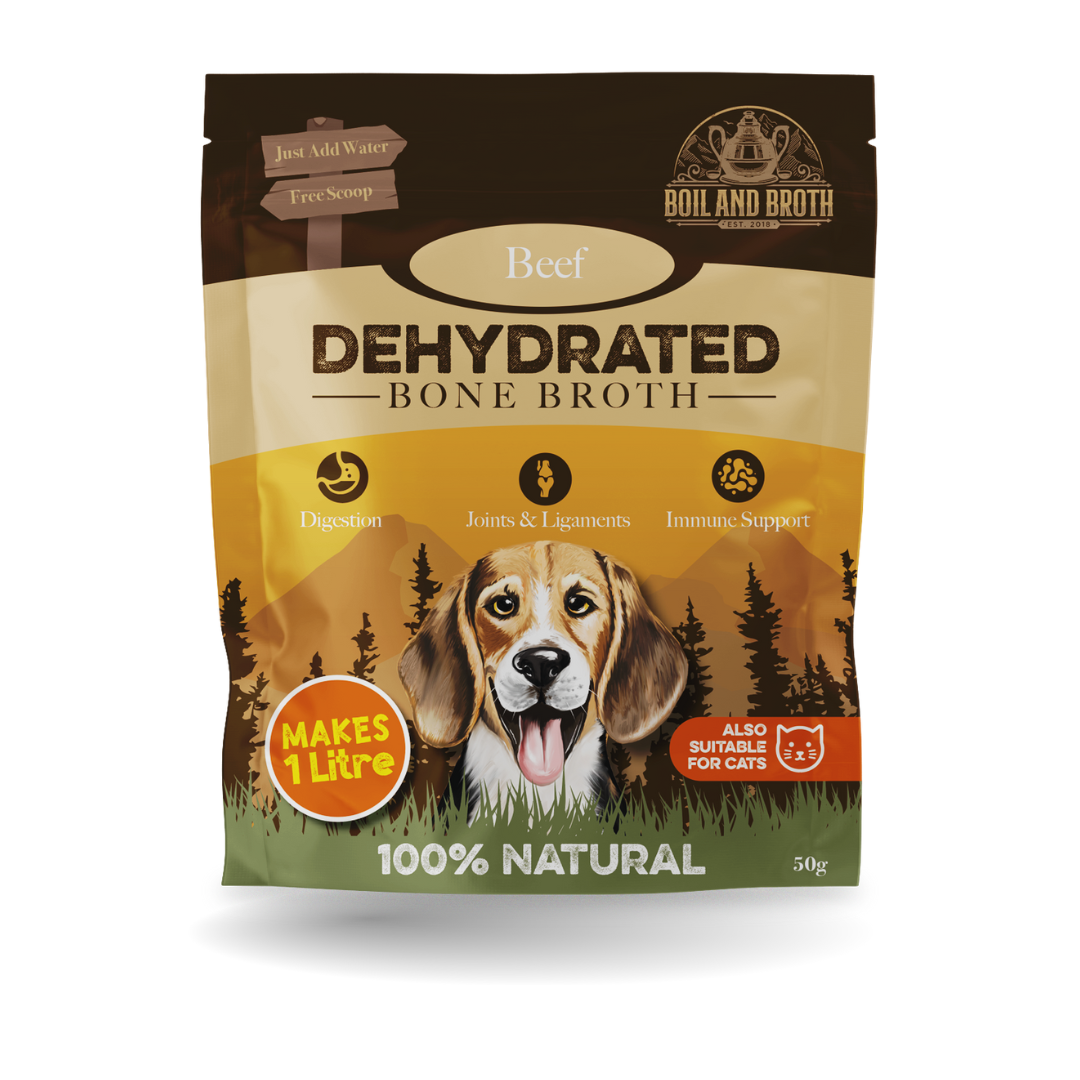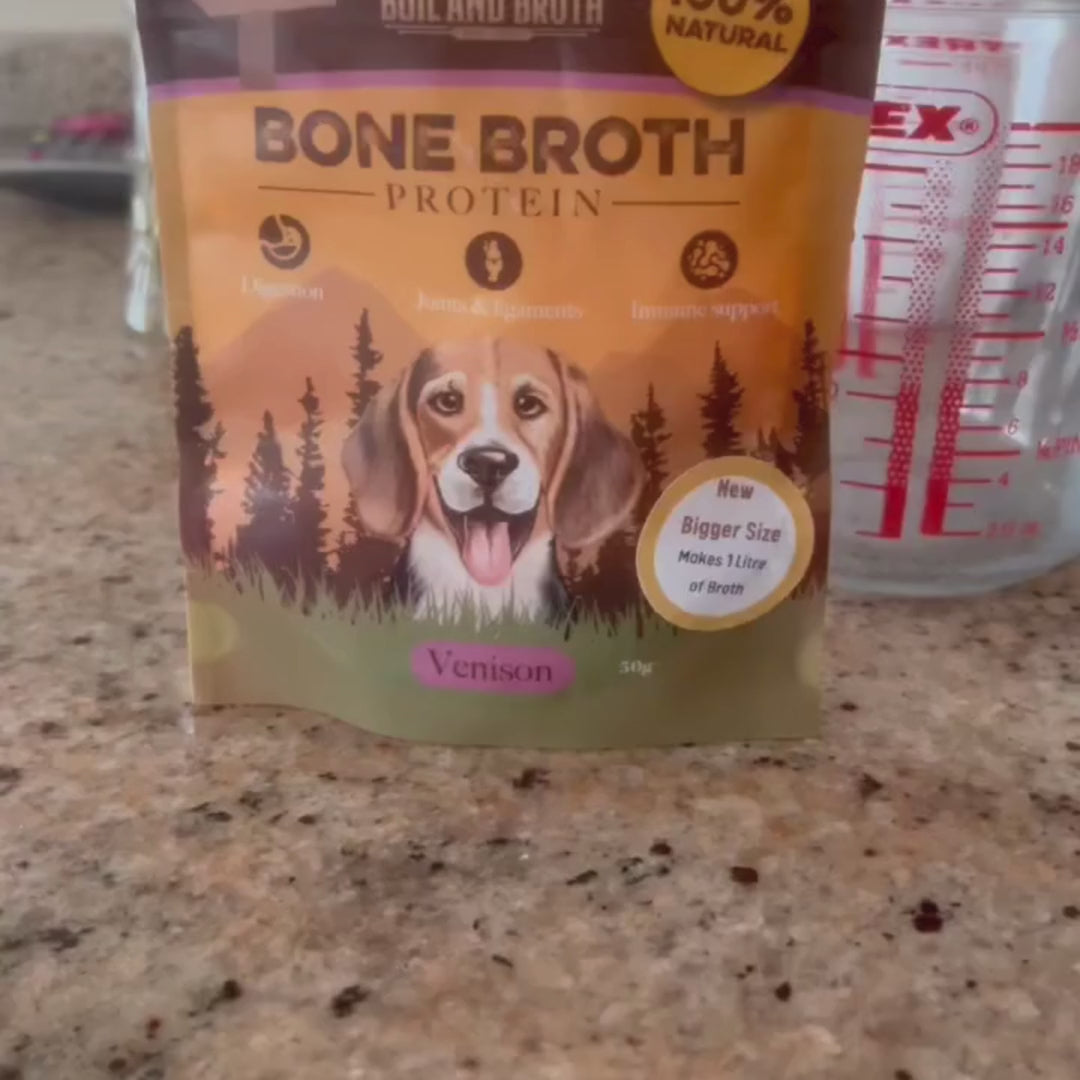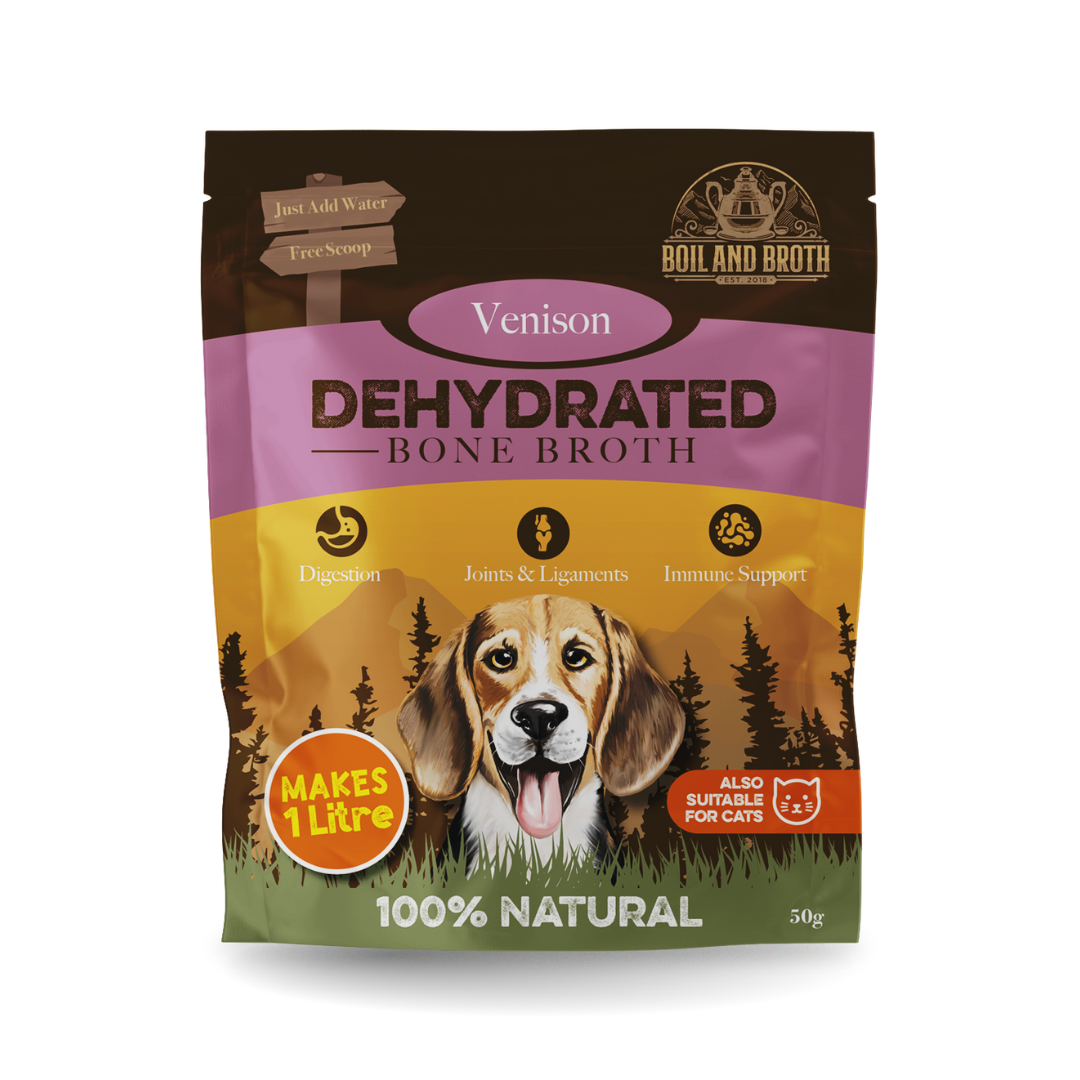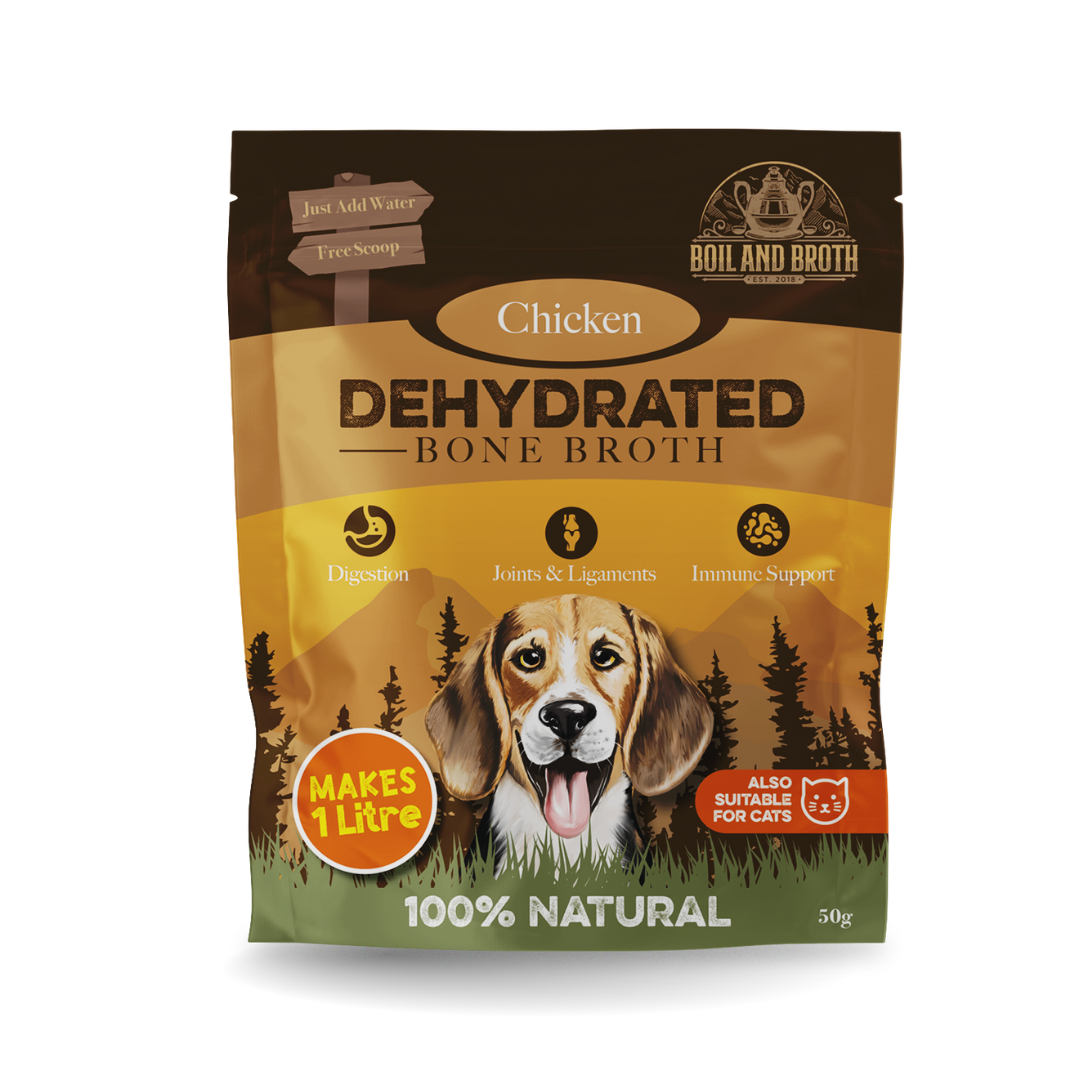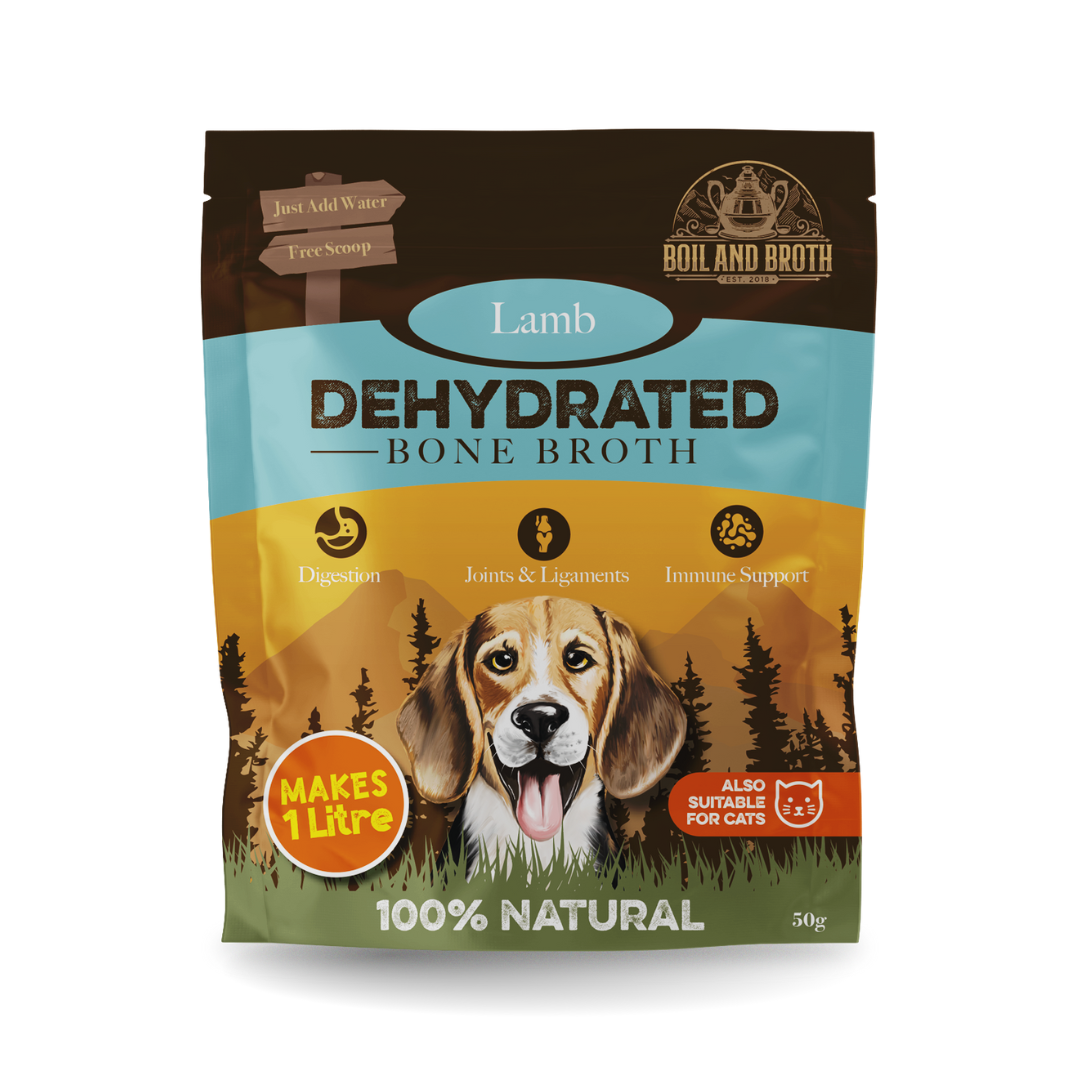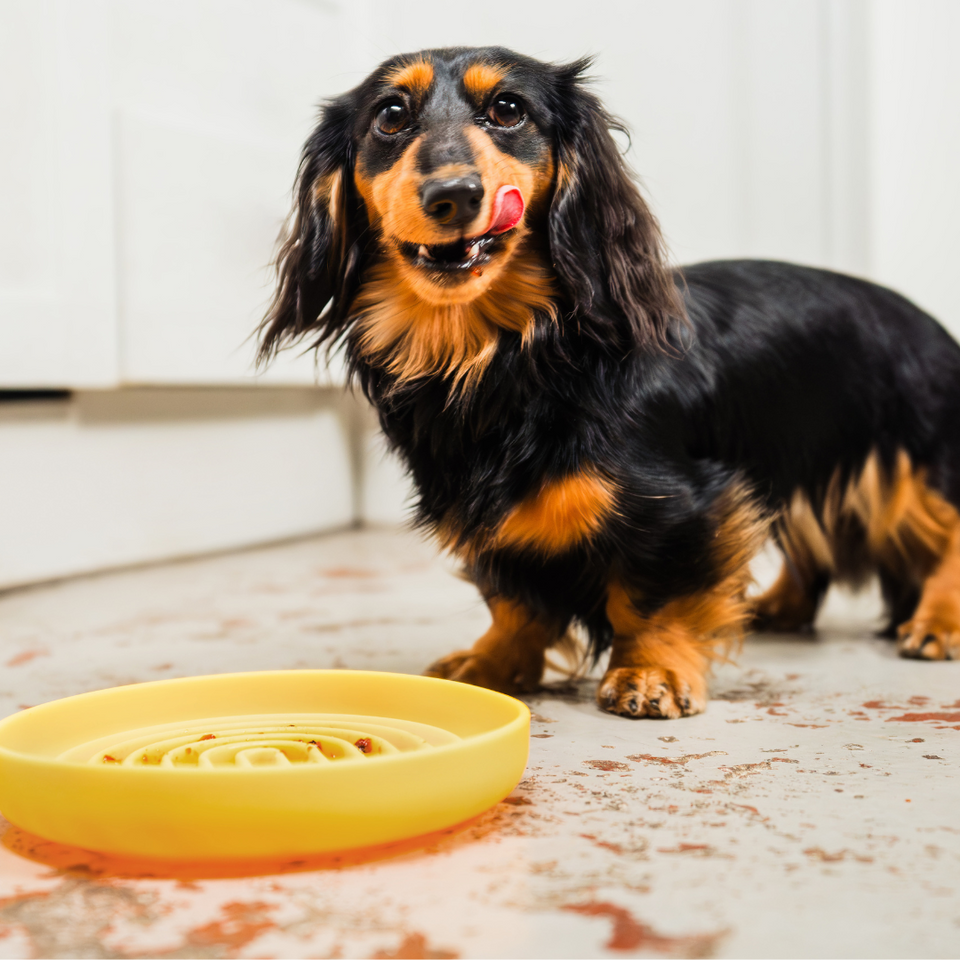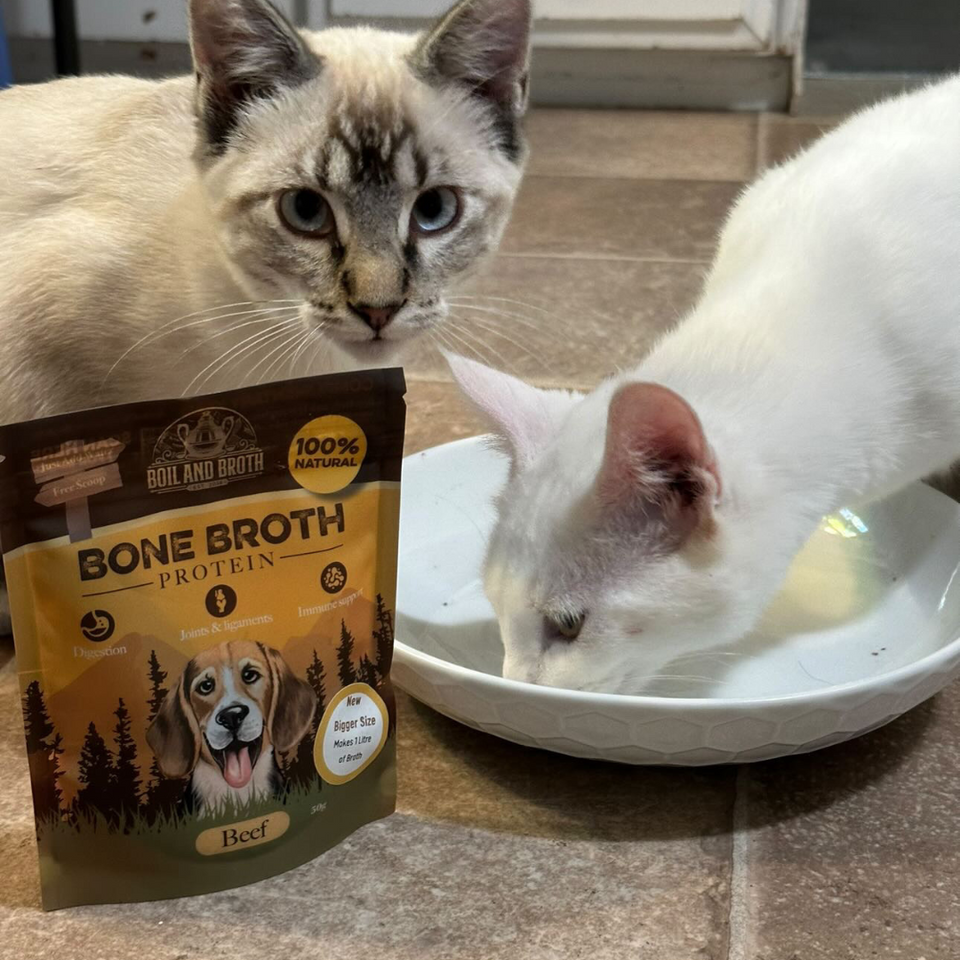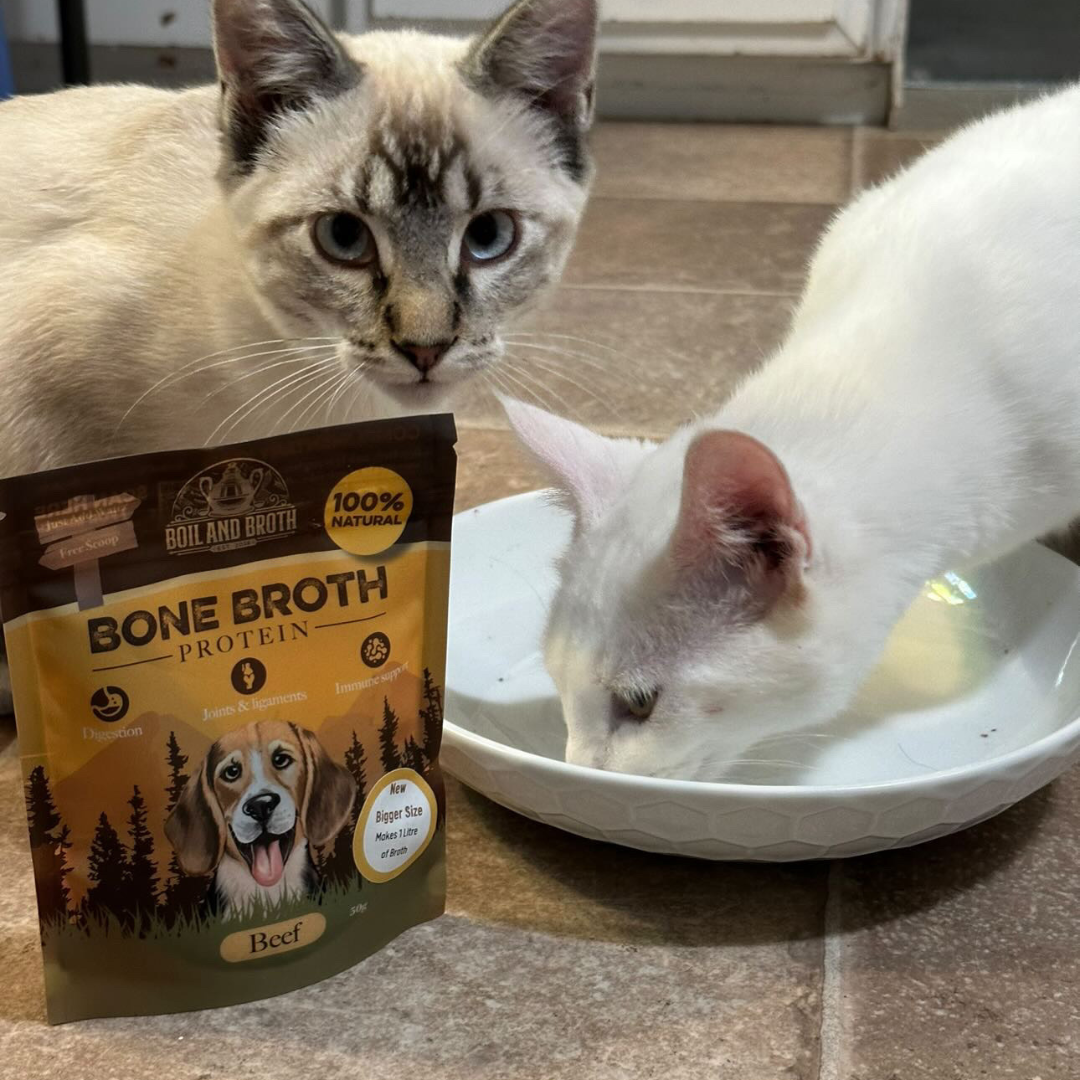
How I Use Bone Broth at Home and with My Patients

Written By Dr Nick Thompson
I've always loved finding natural ways to care for pets, and bone broth—an ancient nutrient-packed liquid from simmered bones—has become a key part of my routine, both at home and in my veterinary practice.
I've seen its value, backed by research like Adams et al. (2019, Journal of Food Science), making it a handy addition to a raw or fresh food diet. Let's explore how I apply it for my own pets and in clinical settings, with some simple tips to boost your pet's health while easing medication needs.
Application at Home
Bone broth fits nicely into my pets' raw or fresh food routine at home (for the dogs, Bluebell, Mouse and Jet, and the cats Ziggy, Miki and Miko).
As we're often pushed for time, we use pre-made, dried bone broths. I love it because it doesn't need freezing or refrigeration and takes up so little space on the shelf. And, yes, I'm lazy, so I'm really happy there are great companies out there making quality products.
If I have time, I whip up broths by simmering chicken necks, wings, or beef or lamb bones from the local fantastic butcher. I simmer for about 24–48 hours with filtered water and one or two tablespoons of apple cider vinegar per gallon (about four and a half litres of water). As Adams et al. (2019, Journal of Food Science) show, it's a trick that lifts nutrients with a 15% calcium rise in the resulting broth.
Bone broth, whether homemade or from reputable suppliers, is rich in collagen and glutamine (good for the gut and joints, as I discussed in the last blog). Elly and I give Jet, my 25kg skinny rescue lurcher, 1–2 tablespoons daily in their meal, while the cats can get 1–2 teaspoons, adjusted to their sizes.
I keep broth in ice cube trays in the summer, a trick backed by Taylor et al. (2021, Journal of Applied Animal Nutrition). I don't have a problem giving the dogs the odd broth cube from the freezer, but not loads!
According to Johnson et al. (2020, Veterinary Medicine International), collagen supports joints for my pup when he shows slight stiffness. Jet, the 18-month-old lurcher, is forever coming back from walks with sprains and strains from cavorting around with the girls! They, being older and wiser, look after themselves a lot better.
Application with My Patients
In my vet practice, bone broth is a game changer in a holistic treatment plan. I add it to help patients during recovery or with ongoing conditions. For a dog with joint stiffness, I pair it with osteopathy, acupuncture and hydrotherapy, cutting back on NSAIDs where possible. These useful drugs carry risks like gastro-enteritis, regurgitation, diarrhoea and vomiting, as noted by the Veterinary Medicines Directorate (2023).
Protein in the bone broth aids healing, as Smithson et al. (2021, Journal of Small Animal Practice) suggest, as we've discussed in the podcasts I've done with Rachel from Boil and Broth. Jet's gash on his right shoulder is a classic case of clean, successful secondary intention healing after injury. Having bone broth post-surgery is a must, too.
For cats (and sometimes older dogs) with hydration issues, its fluid benefits support kidney function - see Davis et al. (2020, Journal of Feline Medicine and Surgery).
Bone broth can be given via syringe during hospital stays for picky eaters or included in discharge plans for when my patients get home. Dr Susan Wynn, an integrative vet, values its potential in her 2018 paper in the American Journal of Veterinary Research, noting its nutrient boost.
I've used broths to ease gut inflammation in IBD cases, aligning with Patel (2023, Veterinary Record), who highlights bone broth's probiotic and pre-biotic capabilities. Dosing is usually customised, approximately, —1–2 tablespoons per 10 kg for dogs and 1–2 teaspoons for cats.
Empowering Health at Home and in Practice
Bone broth bridges home and clinic, offering simple, nutrient-rich ways to lift our pets' health daily. It's straightforward to make or buy online and oh-so-easy to use!

